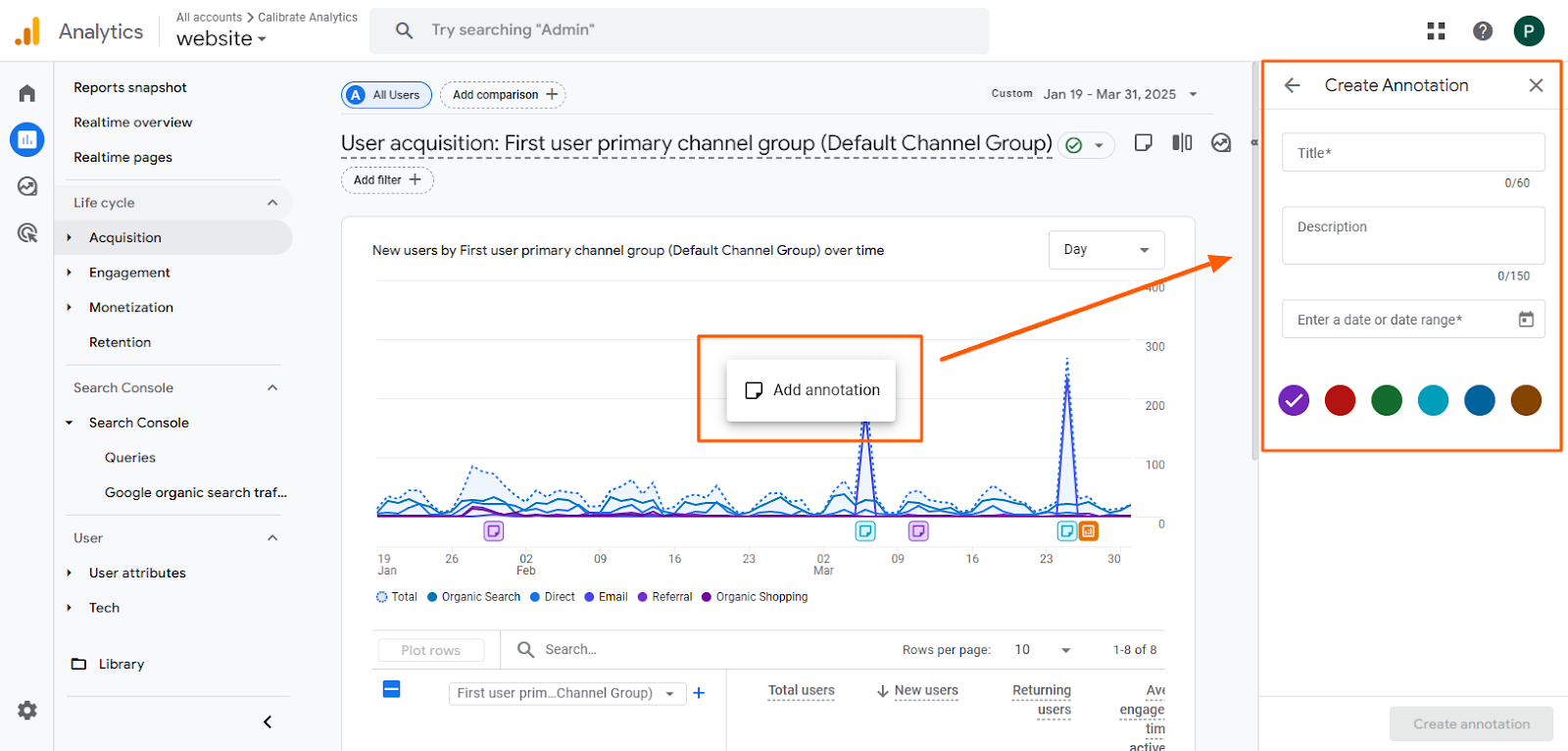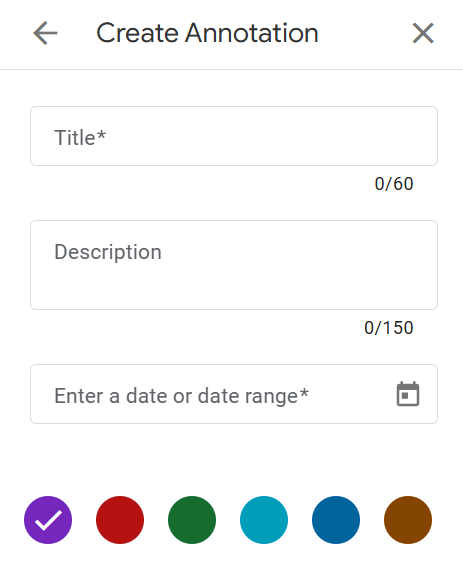
Google recently added annotations to GA4, and we are thrilled! This vintage Universal Analytics feature was a favorite for marking major changes, campaign launches, or outages right in your dashboard. Now, it's back and better integrated into GA4. Keep reading for a quick refresher on why annotations matter and how to make the most of them.
Why Annotations Are an Important Part of GA4
Annotations are a simple but powerful way to keep track of what happened and when. Whether it's a website redesign, a marketing campaign launch, or a bug or outage, annotations let you record the context directly in your analytics data.
Here are a few examples of how annotations can be useful:
- Ad campaign launches, promotions, or press releases
- Paid media pushes
- Website redesigns or major content updates
- Tracking code changes
- Outages or downtime
- SEO gains or losses
- Product launches
- A/B testing periods
- External factors like weather, news events, or global disruptions
How to Add and Organize Annotations in GA4
Before you start, make sure you have Editor access or higher, or you won't be able to access this feature.

Adding an Annotation

- Open any chart within your GA4 property.
- Right-click anywhere on the chart and select the "Add annotation" link.
- Enter your annotation details in the panel that appears on the right-hand side of your screen.
Annotation Details
Next, you'll be prompted to fill in the following:
- Title (up to 60 characters)
- Description (up to 150 characters)
- Date or date range
- Color
Best Practices
- Keep titles short and clear
- Keep titles short and clear Use consistent labels across your team (e.g., "Email Newsletter - March")
- Color-code by category or priority
We encourage you to start using annotations to support better collaboration and more informed reporting. Whether you're tracking campaigns, changes, or unexpected events, annotations help everyone stay on the same page.
What's Next for GA4 Functionality?
Will Google bring back more Universal Analytics features in GA4? We're not sure whether favorites like automated email reporting, custom views, or built-in site speed metrics will return. But if they do, we'll be sure to let you know.
Curious about analytics best practices or how to get more value from your data? Reach out to our team anytime! We're happy to help.





